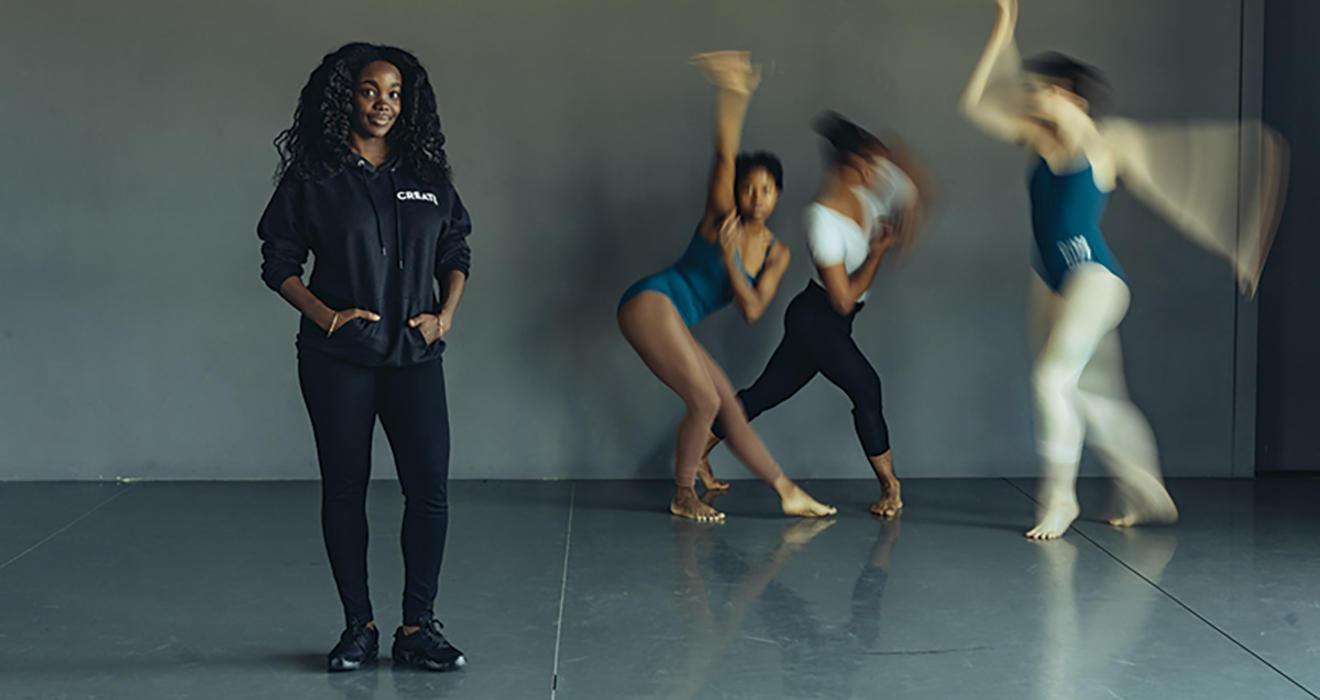
AS A RISING SENIOR IN HIGH SCHOOL, Kahina Haynes ’11 scored admission to a summer intensive with a prestigious dance company, an on-ramp program for aspiring ballerinas to leap into professional careers. Just as top high school athletes are scouted and recruited, summer intensives are opportunities to be discovered.
She remembers, “I was the only Black dancer.”
The company’s artistic director came to sit in on a rehearsal. Students were taking turns demonstrating exercises in small groups when Haynes overheard the artistic director whispering to the instructor:
“She’s really good, but her complexion is so distracting. She’s going to be immediately noticeable. That won’t work.”
Haynes kept dancing, though it felt like she’d been shoved across the studio by those words.
She shakes her head. “It would have been different if I overheard something about my skill development or technical ability, but my complexion is something that’s never going to change.”
Haynes says she realized then that her Black identity was being perceived subjectively — as though it wasn’t in line with the company’s production aesthetics. In a boardroom, that would be grounds for a lawsuit. Why was it regarded as “artistic license” in ballet?
“I chose Princeton because at that time the University was investing in the performing arts ... . It felt like fertile ground for exploring my questions about dance.”
— Kahina Haynes ’11
Although Haynes stayed silent through that rehearsal, she refused to do so going forward. She has since spent years speaking up for herself and others to solve what she calls “the problem with dance.” By that, she means the systemic racism so openly at play in the dance world in general, but ballet in particular. This issue leads to a significant achievement gap in who is able to enter and rise in dance — and the other roles that orbit around it in choreography, dance criticism, studio ownership, academia, and policymaking.
Most recently, Haynes began a two-year term as a member of the President’s Council on Sports, Fitness & Nutrition, where she has the ability to help push for opportunities for marginalized youth across the nation who don’t typically have access to dance training.
But most of her energy goes into DIW, or the Dance Institute of Washington, where Haynes has been executive director since 2016. “When people say, ‘That looks good’ in ballet, what they’re not even conscious of is that it translates to, ‘That looks more white,’” she says. At DIW, Haynes and her colleagues are instilling a new way of thinking about who belongs onstage and how to get them the training they need to get there.
The nonprofit dance school has taught ballet to more than 45,000 underserved children since it was founded in 1987 by a soloist at the Dance Theatre of Harlem, the late Fabian Barnes.
Most DIW students identify as people of color, and all of their instructors and choreographers do too. Columbia Heights, where DIW owns and operates a light-filled building with performance space, is home to high-end restaurants and shops but also within walking distance of neighborhoods with much higher crime rates and a different reality.
DIW provides partial or full scholarships to 90% of students. It also covers the cost of everything from leotards and pointe shoes — which have to be replaced at least every three months — to travel to competitions.
Haynes is committed to making dance accessible to everyone, as she views it as a universal act that humans instinctively do. “You dance before you talk. Your heart is dancing — from the beginning, it’s moving to a beat.”
When Haynes weaves words together like choreography, everything feels both urgent and possible.
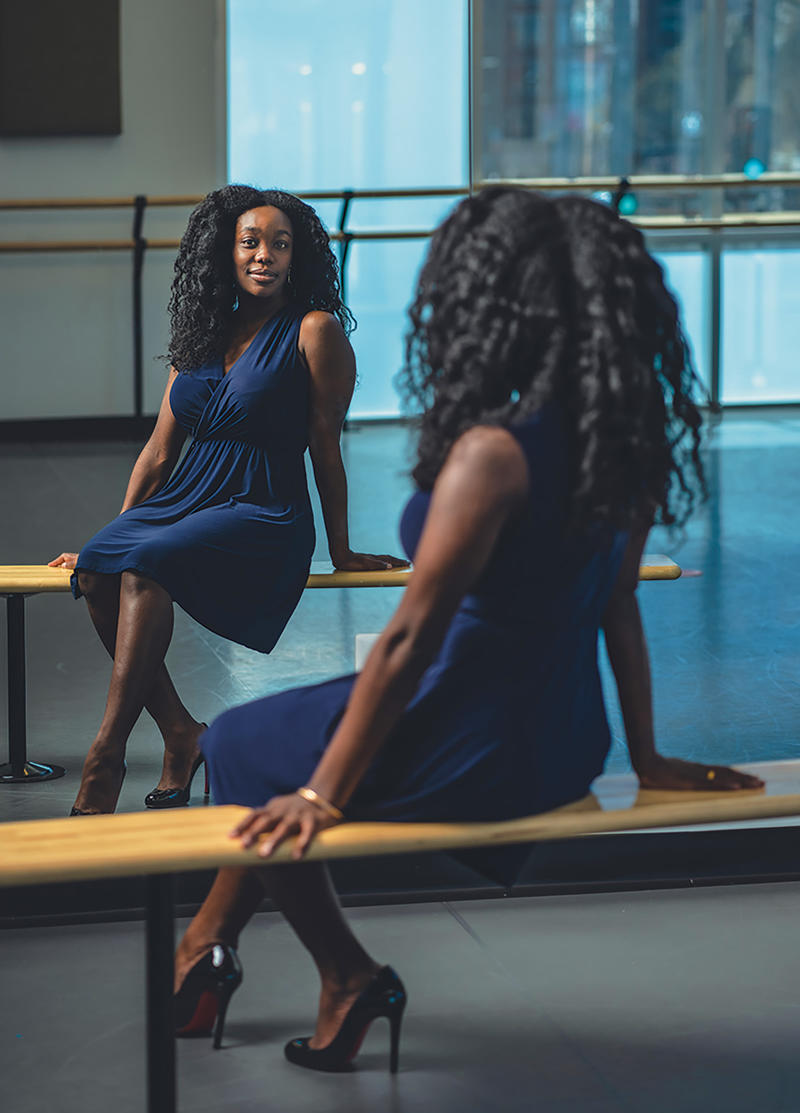
A third-generation professional dancer and first-generation Guyanese American, “I was birthed to dance,” Haynes says. Growing up in Washington, D.C., she was already taking classes by age 2 — when aspiring ballerinas typically begin training.
She says she was awkward as a young girl, but when the music started playing, something flipped. “I felt fluid, and things always fell into place. Even from a young age, I remember recognizing the connectedness that happened with the people dancing next to me sharing a space,” Haynes says.
By high school, she dedicated six to eight hours daily to pirouettes, pliés, and assemblés in the studio at a competitive preprofessional program. The classes were expensive, but her family had the means to afford them and the access to know where to enroll her.
Pursuing a college education wasn’t a priority. “Getting an invitation to join a professional ballet company was my whole world. It was everything I’d been working toward,” she says. Things were lining up beautifully until the summer intensive events made her rethink her life course.
Suddenly, a four-year college that offered dance opportunities and the ability to study inequity across disciplines made more sense. Even at 17, Haynes understood she needed that academic background to make an impact in the field as a thought-leader and a dancer.
“I chose Princeton because at that time [2007] the University was examining its strategic planning and investing in the performing arts. They already had plans for the Lewis Center for the Arts. There was an explosion of student-led dance companies and organizations. It felt like fertile ground for exploring my questions about dance.”
Haynes was admitted early decision and never looked back.
William Keiser ’19, a former DIW employee who focused on marketing and public relations, considers Haynes to be his mentor. “Kahina nurtures dreams,” he says.
DIW is “a community institution that models what dance education should look like in its most holistic and healthy form,” he says. “It provides its dancers with tools to survive in an industry they weren’t built to survive in — and that wasn’t built to serve them.”
Now a screenwriter in Los Angeles, Keiser points to ballet’s history of European elitism and how it has been imported to the U.S., specifically with The Nutcracker.
Tchaikovsky’s two-act classical ballet premiered in a gilded theater in St. Petersburg, Russia. In the 1960s, it became a Christmas tradition at the New York City Ballet, where it was choreographed by George Balanchine, who was trained at the Imperial Ballet School in St. Petersburg. With an extravagant budget and ticket prices that made attending impossible for some, Balanchine introduced ballet as an art form accessible to the elite. The choreography perpetuated Asian stereotypes with the Tea (Chinese Dance) including Fu Manchu mustaches and dancers in “yellowface,” which the Ballet only modified in 2017 with approval from the Balanchine Trust.
DIW is determined to keep dance precise but disrupts the idea that only those who look a certain way can play certain roles, or rise.
DIW recognizes that changing that status quo begins with offering access to exceptional training, especially to those who didn’t have the entry point to start at age 2. Keiser says, “The choreographers the Dance Institute of Washington brings in are rigorous. Students realize quickly that if they get serious about achieving their goals, the school will help them every step of the way.”
DIW groups and soloists consistently place in the most elite competitions, such as the Youth America Grand Prix, the nation’s largest dance exhibition. Academically, 99% of DIW students graduate high school. In the past few years, 68% of them have gone on to four-year colleges, many with dance-related scholarships. In addition, 30% have directly entered the professional dance world, joining renowned companies such as the American Ballet Theatre and the Dance Theatre of Harlem, or in productions like The Lion King on Broadway. Others are hired for career opportunities in the wider dance world such as choreography or education.
But DIW is far more than a successful preprofessional school. It also provides homework help, physical therapy, nutritious meals, access to counseling, application support for summer intensives, and college tours. Preprofessional students walk through its doors after school and stay until 8 p.m. on weekdays — training hard but taking a “power hour” away from the studio to receive the other services.
Originally, Keiser had dreamed of becoming a ballet choreographer. But he took it as a sign to go to college after sustaining an injury while at a professional training program.
At Princeton, he studied German and minored in dance, choreographing student-led dance companies. There are currently 15 of them. “They take pride in their place on campus. People don’t go to sports events at Princeton as much as they go to dance shows. They scream for you when you’re dancing on stage, and you feel like a rock star,” Keiser recalls wistfully.
When Haynes came to Princeton in 2007, she scored a spot in two of those clubs: Princeton University Ballet and diSiac Dance Company. The latter, by definition, doesn’t stick to any particular dance style. Instead, members incorporate multiple genres, including contemporary, tap, hip-hop, and jazz. “When I first got to Princeton, I felt like I had nothing in common with the other students. There was little BIPOC representation,” she recalls. But diSiac gave her lifelong friends, a sense of place, and a performance platform. “Was the University diverse? No! But this bubble within the Orange Bubble was extremely diverse.”
After graduation, she completed a master of science in evidence-based social intervention at the University of Oxford, working to crack the code on diversifying dance through policy changes, monitoring, and evaluation. Obsessively searching for ways to close the achievement gap in dance, she says this program was “the one place” that could equip her with the tools.
Haynes’ volunteer work as a dance teacher at Princeton’s Carl A. Fields Center gave her the confidence to launch two companies, beginning with Limitless Dance Company in 2012, a small dance education program dedicated to providing affordable dance lessons to young students. Two years later, she founded Variations Ink. The company partnered with a program called Excel Beyond the Bell to deliver affordable dance curricula to public school students after their academic classes. It offered hip-hop, ballet, bachata, salsa, modern, and African dance. Although both startups shuttered due to a lack of funding, it’s easy to see how this operating model prepared Haynes for her current role.
Stints as a Fulbright scholar in Morocco, consulting at the World Bank in public sector reform, and managing federal grants in the U.S. Department of Health and Human Services gave Haynes invaluable know-how in grant writing, project management, and human resources.
“That whole time, the problem was calling me,” she says. Friends referred her to Barnes and DIW.
What started as a summer dance school for children with deafness in 1987 grew into rented studio spaces for teaching ballet. When some of Barnes’ best students lacked the transportation to safely get to DIW for practice, he would drive around the city to pick them up.
An Oprah Winfrey Angel Network award in 2000 (with an appearance on the Oprah Winfrey Show) brought in greater awareness of DIW and enough funding to open the expansive, light-filled studio space in Columbia Heights. Haynes applied for a ballet teaching position at DIW to wedge her pointe shoe in the door. But when she landed an interview with Barnes, she turned the tables and interviewed him instead.
At the end of the conversation, he created a school director position just for her. Haynes and Barnes would spend hours after work talking through how to expand the curriculum to include holistic support and make the school a model that could be replicated in other cities.
Nine months into that process, Barnes unexpectedly died. It was a shocking blow to the community. The board of directors promoted Haynes to executive director. Two deeply-respected alumni, artistic director Ashanté Green and school director Alexis Johnson, were by her side.
By 2017, a year after Barnes’ death, the school’s future felt rocky at best. “Financial, organizational, funders pulling out left and right, and even students and families as well,” Haynes says. The leadership team decided to put all its energy into the school’s entry in the Youth America Grand Prix, and it took third place in the regional competition.
Haynes attributes that success to a new training curriculum that they piloted.“We excelled in this competition with students who would never otherwise have the opportunity to participate, not just because they couldn’t afford it, but because they didn’t start ballet at age 3, and we demonstrated that using our unique method we could get them ready to compete,” she says.
The DIW leadership team set out to reverse engineer the school’s curriculum around consistent success and on a larger stage, introducing a three-pillared approach: educate, create, and advance.
Haynes says, “What makes our curriculum unique compared to other schools is that we intentionally incorporate building lifelong skills and confidence through compassion, empowerment, academic discipline, emotional support, and nutritional guidance.”
Green, who first came to DIW as a 7-year-old at Barnes’ invitation and returned after graduate school, implements these values in the studio every day. She says: “What helps me in this field is to understand that [students] not only need a level of dedication and attention, but also a reason to continue their why.” She carefully chooses her words to motivate them. “That’s why dance is power,” she says.
The new approach has succeeded. In 2023, with the support of U.S. Rep. Eleanor Holmes Norton (D-D.C.), Congress recognized DIW with $1 million in federal funds to expand the holistic curriculum with programs set to reach even more local families through partnerships for offsite enrichment programming at Boys & Girls Clubs and public schools.
Faith Kelly was one of the Institute’s students who benefited from the new curriculum — and Green’s support. “I have ADHD, so I like to move a lot,” she says. When she was little, music would come on the radio and she’d naturally start dancing. Ballet and DIW turned ADHD into her superpower. “My mom told me about Misty Copeland, a renowned Black ballet dancer, and all I wanted to do was enroll in ballet classes too.”
At 11, she was accepted into the DIW summer intensive program. From 2013 to 2021, she walked through the school’s doors every day, except the one day she took off to attend prom. “We had the most profound dancers giving us master classes from a young age in all different styles,” she says.
Instructors pulled students aside to encourage them to apply and to set up individualized schedules. Kelly participated in elite programs, including Alvin Ailey American Dance Theater, Hope Boykin Dance, Kennedy Center Dance Lab, and Earl Mosley Institute of the Arts.
“The people make it feel like home,” she says. “They keep pushing you. They don’t give up on you.”
At one point, when Kelly wrestled with schoolwork and ADHD, she received tutoring from DIW. They emphasized going to college as much as becoming a professional dancer.
The school also took Kelly and her peers to see dance performances, which had a transformative effect on her. She was on the edge of her seat watching the Dance Theatre of Harlem, a company made up of Black dancers. “They danced to Aretha Franklin and James Brown in pointe shoes. It had a jazz feel, but it was a classical ballet with pirouettes and long legs. That’s what made me want to be a Black ballet dancer,” she remembers.
After a stint with the Alvin Ailey training program, Kelly enrolled in the Institute’s full-time Allegro program geared toward high school graduates. When she graduates, she aims to dance in a top company and then pursue higher education degrees to become a psychologist.
“DIW is not just a dance school,” says Emma Wang ’23, a dancer herself, who majored in neuroscience and concentrated in dance at Princeton. “The core goal isn’t to develop exceptional dancers of color, it’s to develop exceptional people.”
Wang works at DIW as a fellow with Project 55, a one-year program offering Princeton alumni funded opportunities to support organizations dedicated to social change. Her role involves event planning, cultivating donors, and teaching ballet to 5-year-olds on the weekends.
Pilar Castro-Kiltz ’10 advises Haynes directly in her role as founder and CEO of More Canvas Consulting, where she helps leaders in the arts shepherd their organizations. She’s also the founder of Princeton Arts Alumni, a network for graduates working in the arts. Haynes is a newly appointed board member.
A lifelong “bunhead” who danced with Haynes at Princeton, Castro-Kiltz reasons, “If I said to you that we are creating a sports league for underserved youth, you’d understand right away how teamwork and sports make for stronger adults. There isn’t enough conversation about how training in the arts can make for stronger career outcomes, better mental health outcomes, and better community outcomes.”
DIW aims to become the go-to studio for producing the people who prove these outcomes and compel others to invest in rolling out similar preprofessional dance schools.
When Haynes closes her eyes and imagines herself dancing with joy, it’s always in the role of Lark in Meadow, a 1996 ballet choreographed by the late Eric Hampton. The production is contemporary — there are no tutus in sight. “A lark is different from the swan in Swan Lake or the bluebird in Sleeping Beauty, who have fixed constraints,” she says. “I picked Lark because she’s not dancing in classical form. This role is about agency and freedom.” That’s exactly what DIW wants for all of its students.
“The core goal isn’t to develop exceptional dancers of color, it’s to develop exceptional people.”
— Emma Wang ’23
In April, DIW announced that it had received a $2 million grant from philanthropist MacKenzie Scott ’92. The funds came as the result of an open call from Scott’s foundation, Yield Giving, inviting organizations to submit competitive grant applications. Haynes says that with this support, DIW plans to expand its advance pillar, scaling up its international reach through more initiatives like a previous project supporting hearing-impaired dancers in Uganda. They will also grow the Healthy Schools initiative in D.C. public schools, integrating dance instruction with nutrition education and wellness resources.
“DIW is now doing much more than direct service education,” Haynes says. “It is a hub for cultural arts performances, professional incubation of new works by diverse artists, and a community building platform for the performing arts.”
Haynes won’t stop until she sees more kids of color from marginalized backgrounds taking center stage and breaking down barriers so that everyone has the chance to explore a role in the arts.
Danna Lorch is a freelance higher education writer and journalist based in Boston.
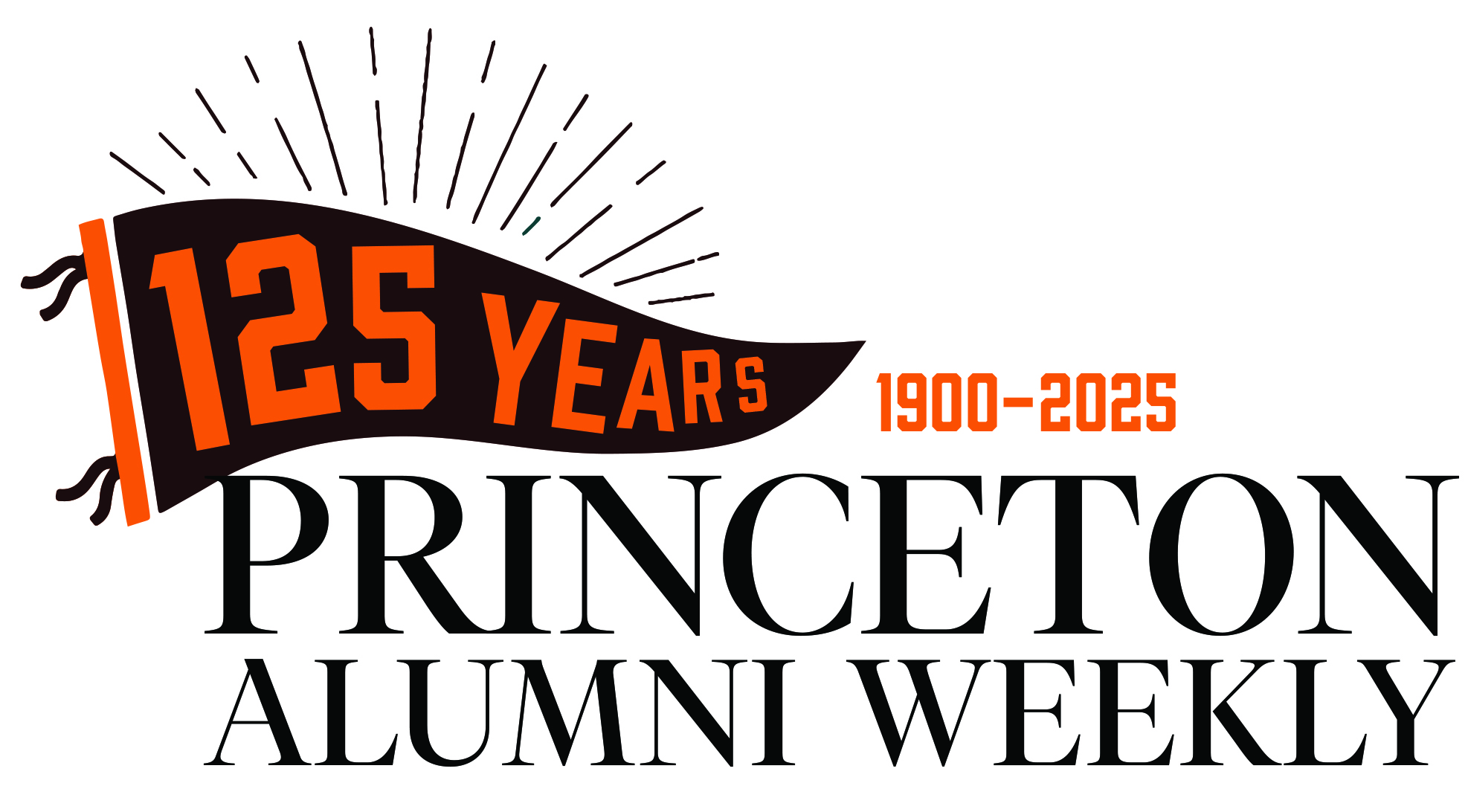

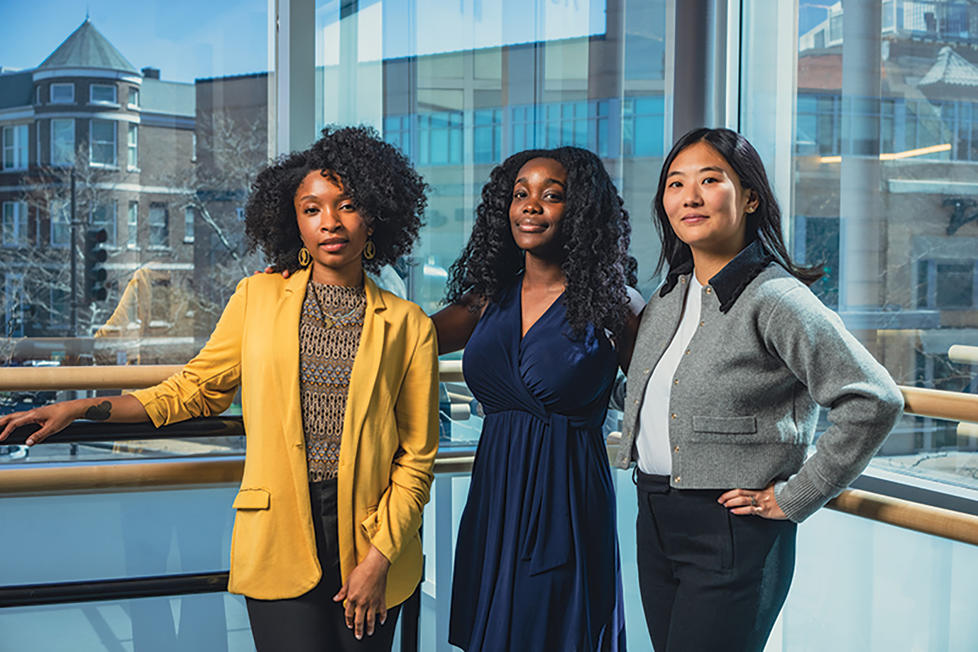

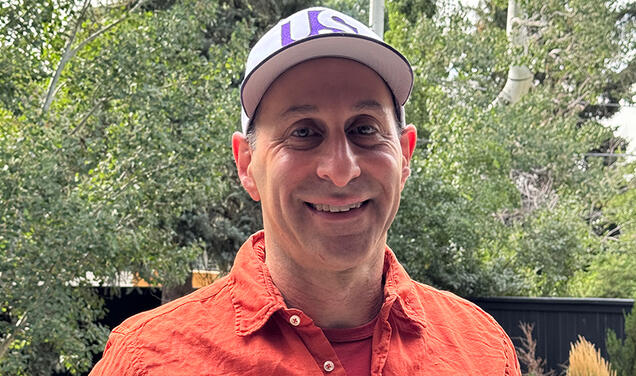


0 Responses